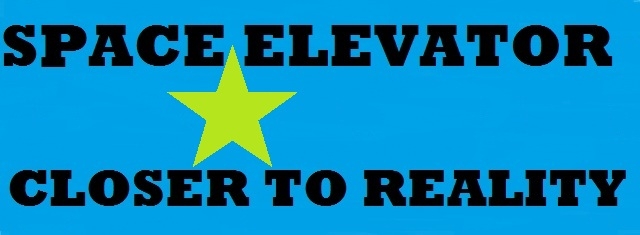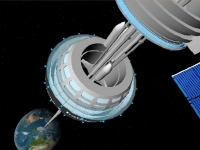Lifestyle
CANADIAN SPACE FIRM HAS BEEN GRANTED US PATENT FOR A SPACE ELEVATOR
SPACE ELEVATOR IN A TOWER 12 MILES HIGH

(Source: © Ruby BIRD & Yasmina BEDDOU)
Canadian space firm Thoth Technology Inc. has outlined plans for an elevator to space, potentially saving huge amounts of fuel and money that form part of the vast cost of launching rockets into orbit. The company has been granted a US patent to build a freestanding tower, reaching 12 miles (20 km) above the planet's surface.
According to Thoth Technology Inc., the company that was awarded the patent, the U.S. patent allows for an elevator that would be 30 percent cheaper than the fuel required by a conventional rocket. Also, the system would be fully reusable, further reducing costs,
According to Thoth Technology Inc., the company that was awarded the patent, the U.S. patent allows for an elevator that would be 30 percent cheaper than the fuel required by a conventional rocket. Also, the system would be fully reusable, further reducing costs,
The company said the tower, named the ThothX Tower, will be an inflatable, freestanding structure complete with an electrical elevator and will reach 20km (12.5 miles) above the Earth.
“Astronauts would ascend to 20km by electrical elevator. From the top of the tower, space planes will launch in a single stage to orbit, returning to the top of the tower for refueling and reflight,“ Brendan Quine, the tower´s inventor, said in a statement.
“Astronauts would ascend to 20km by electrical elevator. From the top of the tower, space planes will launch in a single stage to orbit, returning to the top of the tower for refueling and reflight,“ Brendan Quine, the tower´s inventor, said in a statement.
The tower, pneumatically pressurized and actively guided over its base, could also be used for wind-energy generation and communications, according to Thoth Technology. The tower will also be open to tourists, providing a way for people to experience space-like conditions without losing gravity.
Thoth Technology is also working on several missions still in the development phase, such as the Northern Light lander concept for Mars and an Extrasolar Spectroscopy of Planets mission that would probe for elements in the atmospheres of alien planets.
Thoth Technology is also working on several missions still in the development phase, such as the Northern Light lander concept for Mars and an Extrasolar Spectroscopy of Planets mission that would probe for elements in the atmospheres of alien planets.
Ruby Bird Elevator Space Future Science Canada Usa Ribbon Moon Rocket Energy Travel Nasa Tower Patent Planet Surface Mars Cosmonaute Astronaute
Liability for this article lies with the author, who also holds the copyright. Editorial content from USPA may be quoted on other websites as long as the quote comprises no more than 5% of the entire text, is marked as such and the source is named (via hyperlink).






